|
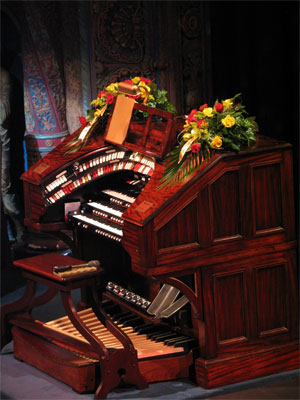
The 3/14 Mighty WurliTzer
installed at the Tampa Theatre.
The Tampa Theatre 3/14 Mighty WurliTzer Theatre Pipe Organ is a magnificent 3 manual, 14 rank instrument maintained by the Central Florida Theater Organ Society.
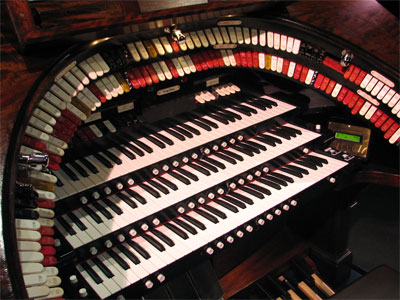
The keydesk of the 3/14 Mighty WurliTzer Theatre Pipe Organ
Volunteer organ technicians Richard Gleason, Bill Shrive and George Losinger perform routine maintenance on the organ. Recently, just weeks before the 51st Annual ATOS Convention of 2006, they upgraded the instrument's relay system. The 3/14 Mighty WurliTzer is now better than ever!
Members of The Central Florida Theater Organ Society perform at the 3/14 Mighty WurliTzer before most films including Rosa Rio, Tom Hoehn, Bob Baker, Bill Brusick, Stephen Brittain, Bob Courtney, Johnnie June Carter, Richard Gleason, Sandy Hobbis, Bob Logan and Bill Shrive.
A Closer Look At The Console
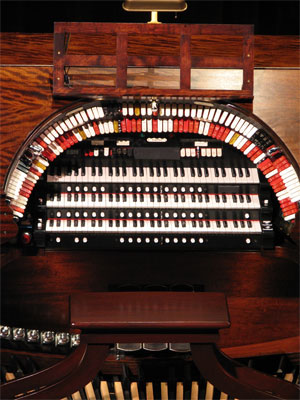
The console of the 3/14 Mighty WurliTzer Theatre Pipe Organ.
The original Mighty WurliTzer Theatre Pipe Organ was a two manual instrument with eight ranks. It was used until the late 1950s before being moved to a church in Tampa where it stayed until the 1970s. The church decided it wanted a new organ about the same time the Tampa Theatre was being refurbished. So, a few dedicated individuals formed the Central Florida chapter of the ATOS in 1978 and negotiated with the Tampa Theatre to install a larger instrument. An additional six ranks of pipes and a larger three manual console to handle these additional ranks were located.
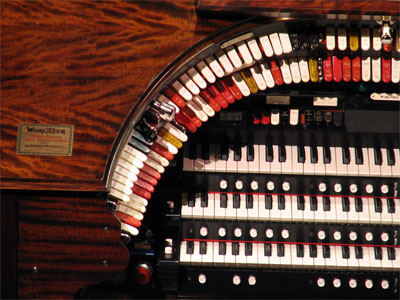
The left bolster of the console.
Above, we see the left bolster of the console containing the Pedal and some of the Accompaniment stops. The original organ was removed from the church, while the back breaking chore of moving pipes, rewiring, replacing magnets, releathering pipe chests and regulators was painstakingly accomplished.
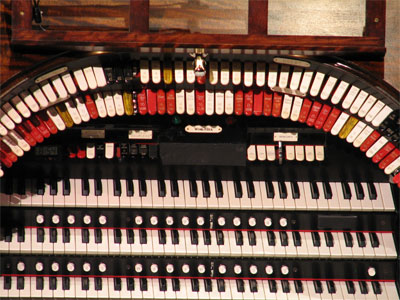
The back rail and fallboard.
This is the back rail and fallboard containing the Great, Generals, Tremulants and Second Touch stops. The organ now has fourteen ranks and almost 900 pipes. In addition, many special effects, such as xylophone, sleigh bells, etc. had to be found, and wired into the larger console.
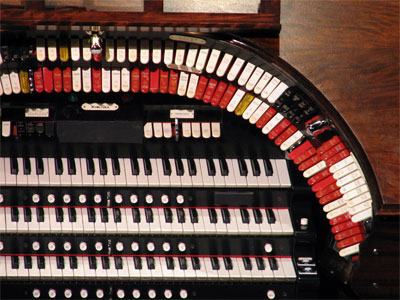
The right bolster of the console.
The Solo stops are found in the right bolster of the console and below these, the ones that control the Orchestral manual. Volunteers spent thousands of hours installing the pipes and wind chests, and ran miles of wiring. Thanks to their efforts, the 3/14 Mighty Wurlitzer was playable by 1986. Since then, the instrument has been played before most films and for special programs, a tradition that ciontinues to this day. The organists are all CFTOS volunteers have generously donated many manhours for the sole purpose of providing music in the tradition of the Theatre Pipe Organ. Work continues on this majestic machine, as it requires routine maintenance and improvements to keep it in proper condition for the public.
The Theatre
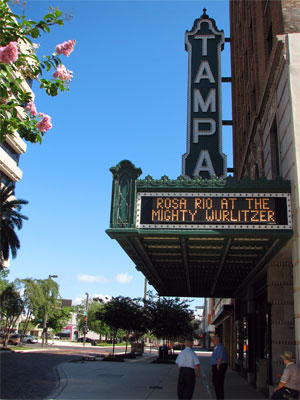
The Marque of the Tampa Theatre.
Built in 1926 as one of America's most elaborate "movie palaces", the Tampa Theatre today is a fiercely protected and generously supported landmark. Designed by famed theatre architect John Eberson, the Tampa Theatre is a superior example of the "atmospheric" style of theatre design.
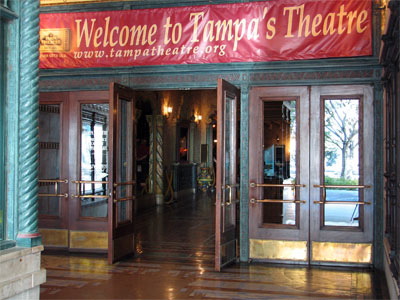
The entrance to the Tampa Theatre.
Inside the Tampa Theatre, audiences are transported to a lavish, romantic Mediterranean courtyard replete with old world statuary, flowers, and gargoyles. Over it all is a night time sky replete with twinkling stars and floating clouds.
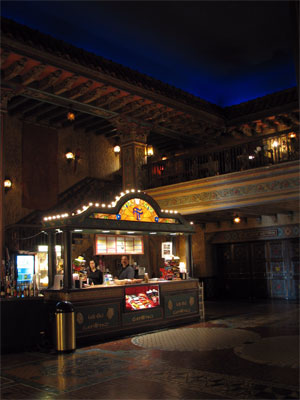
The concession stand in the lobby.
Today, the Tampa Theatre is a remarkable success story, presenting and hosting over 600 events a year. With a full schedule of first run and classic films, concerts, special events, corporate events and tours, the theatre is one of the most heavily utilized venues of its kind in the United States.
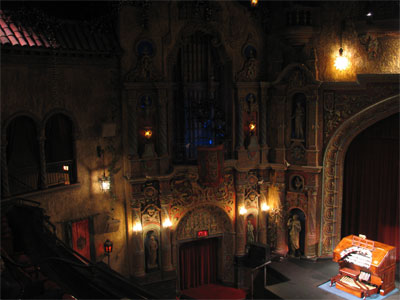
Lee Duncan Auditorium at the Tampa Theatre.
The Tampa Theatre was named to the National Register of Historic Places in 1978. It is a Tampa City Landmark, and is a member of the League of Historic American Theatres.
The Lady And The Machine
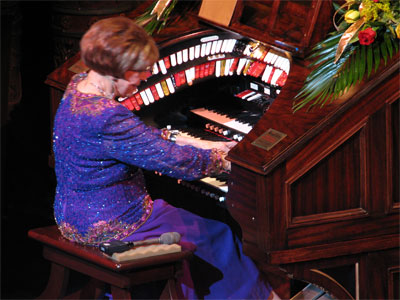
Rosa Rio at the 3/14 Mighty WurliTzer.
Rosa Rio's career began in the silent film era in spectacular movie palaces in New York and New Orleans. In the '30s and '40s she was dubbed "Queen of the Soaps" for providing organ accompaniment for classic radio shows including "The Shadow" and "The Bob and Ray Show." She has worked with many Hollywood legends including Lucille Ball, Orson Welles, and Art Carney. She created and recorded scores for over 365 silent films for the Video Yesteryears collection.
|

